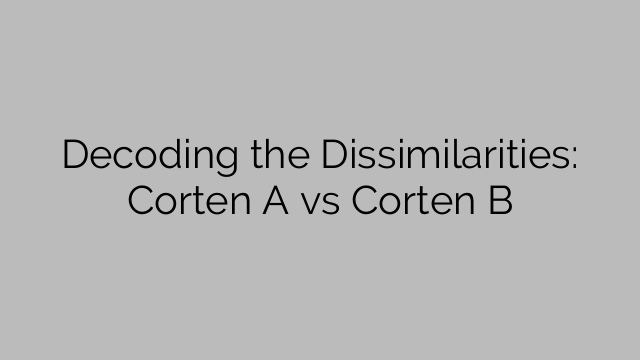To comprehend the dissimilarities between Corten A and Corten B, it is essential to grasp the concept of weathering steel. Weathering steel is a group of steel alloys developed to eliminate the need for painting and form a stable rust-like appearance when exposed to the environment. This unique characteristic makes it a popular choice for outdoor sculptures, architectural cladding, and structural applications.
1. 構成:
Corten A and Corten B have distinct chemical compositions that differentiate their corrosion-resistant properties. Corten A contains more copper, chromium, and phosphorus, while Corten B has more phosphorus and nickel.
2. 機械的特性:
Both Corten A and Corten B have similar tensile and yield strength. Tensile strength refers to the maximum amount of stress a material can withstand before breaking, while yield strength refers to the maximum stress the material can withstand without permanent deformation. These properties make both types of weathering steel strong and durable.
However, Corten B has a higher impact toughness, which makes it more resistant to fractures under shock loading. This property is valuable in applications where the material may be subjected to sudden impacts or vibrations.
3. Weldability:
Corten A and Corten B have different weldability characteristics. Corten A is generally considered to have better weldability compared to Corten B. This is mainly due to the higher phosphorus content in Corten B, which can lead to increased susceptibility to cold cracking during welding. Preheating and post-weld heat treatment can help to minimize this issue.
4. 用途:
Corten A and Corten B are used in various applications, but some differences determine their suitability for specific purposes. Corten A is commonly used in architectural applications, such as cladding, facades, and roofing, as its rust-like appearance adds aesthetic value to structures. Corten A is also suitable for structural applications, such as bridges and building frameworks.
On the other hand, Corten B is often used in heavy-duty applications, such as load-bearing structures and high-temperature environments. Its higher impact toughness makes it more resistant to fractures under challenging conditions, making it an ideal choice for construction machinery or components subject to rigorous mechanical stresses.
In conclusion, although Corten A and Corten B are both types of weathering steel with similar corrosion-resistant properties, they have distinct dissimilarities. Understanding these dissimilarities can help in the appropriate selection of the desired weathering steel for specific applications. Whether you need weathering steel for architectural purposes or heavy-duty structural applications, considering these differences will ensure optimal performance and longevity.
[ad_2]

